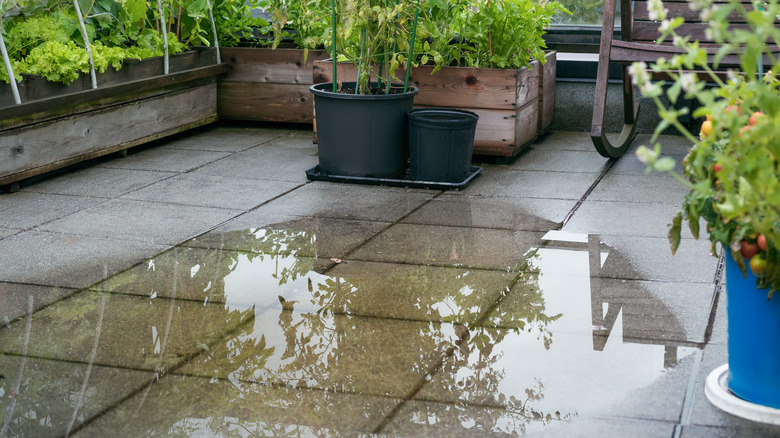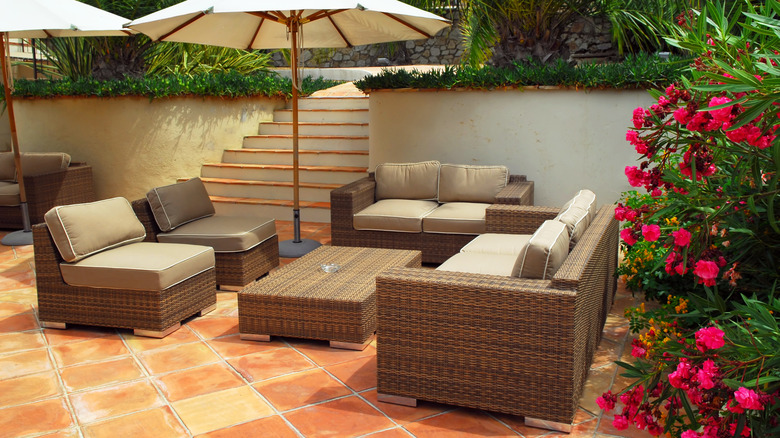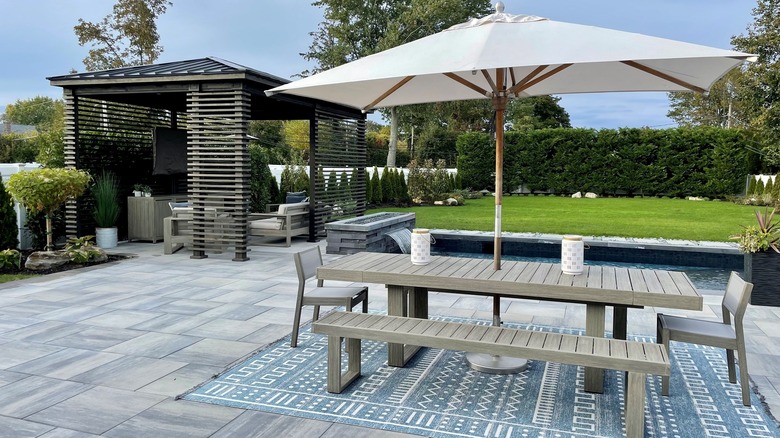Which Patio Flooring Gets Terrifyingly Slippery When Wet?
Creating a comfortable outdoor patio gathering area is a great way to take advantage of spaces around your home that may otherwise go unused. When you're selecting the flooring for this area, there are several different types of tiles you can use, so it's important to select materials that can stand up to the types of weather you have, including UV rays from the sun. Unfortunately, although most patio tiles can withstand rain and snow, some of them become dangerously slippery when wet. If your patio will have regular moisture because it's uncovered, it doesn't receive much sunlight, or you live in an area that has quite a bit of rain, focus on flooring options that provide a non-slip or reduced-slip surface. One of the most slippery tiles that you shouldn't use on your backyard patio is glazed ceramic. Other types of patio flooring to avoid because of how slippery they can get include polished granite, polished travertine, and porcelain.
Why are these types of outdoor patio stone tiles so dangerous in wet conditions? A study in the Journal of Materials in Civil Engineering showed that the finish and the characteristics of the material played key roles in determining the slipperiness of the tile. Stone that has a high porosity tends to create a rougher surface that helps people avoid risk as they walk across it. Additionally, types of stone tiles that have a higher level of quartz content tend to be less slippery in most circumstances.
Measuring the slip ratings for various types of patio floor tiles
When you're studying different types of flooring tiles to install on your patio, some manufacturers list slip ratings for their products. You can use these ratings to determine which ones to avoid installing.
One of the most popular ratings is the ramp test, which measures the slipperiness of tiles when they become wet. The actual ramp test measures the angle at which someone slips on a wet tile covered in oil, represented as an R number. Of course, when you're using your tiles, they'll almost certainly be flat, and you won't have oil on them — but the rating can give you an idea of which types of stone you should avoid in wet areas. The tiles with the biggest problems are those with an R9 rating, including many glazed options; you also may want to avoid using any tiles with an R10 rating if you expect they'll frequently be wet. Tiles with ratings of R11, R12, and R13 should be safer to use on a wet patio because of their greater slip resistance.
Another slip rating involves the pendulum test, although it primarily appears with products found in the United Kingdom. The rating for the pendulum test also includes values that measure slip resistance. Any tiles that have a rating of 36 or higher in PTV value offer a lower risk of slipping on them; tiles with ratings of 24 or lower present a high risk for slipping.
How can I make tiles that are dangerously slippery less risky?
If you purchase a home that has some of these slippery patio tiles already installed, you certainly could replace them with a flooring material that's safer. If that's not in your budget, though, you could take a few other steps to reduce the slipping hazard they present.
One of the easiest things you can do is keep them clean. If your tiles have algae growth or dirt that becomes mud in wet conditions, cleaning them will make them less slippery. Start by rinsing them with a garden hose. You then should be able to use liquid dish soap and warm water to scrub the tiles and to make them safer to use, even when they're wet. Remove snow and ice as soon as possible, too. Another easy option is to cover your tiles with a non-slip material. Make use of rugs, perforated or rubber tiles, a roll of rubber, or perforated roll-out flooring that keeps the surface where people are walking free from moisture.
Of course, if you like the look of your patio flooring, covering it with another material may not fit your desires for the presentation of the space. Instead, you could add a non-slip coating treatment to the surface that increases the grip of the tiles, making them safer for walking even when they're wet. You also could consider using an etching acid to add texture to the tiles, creating more traction.


